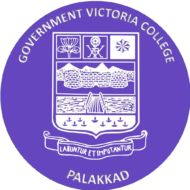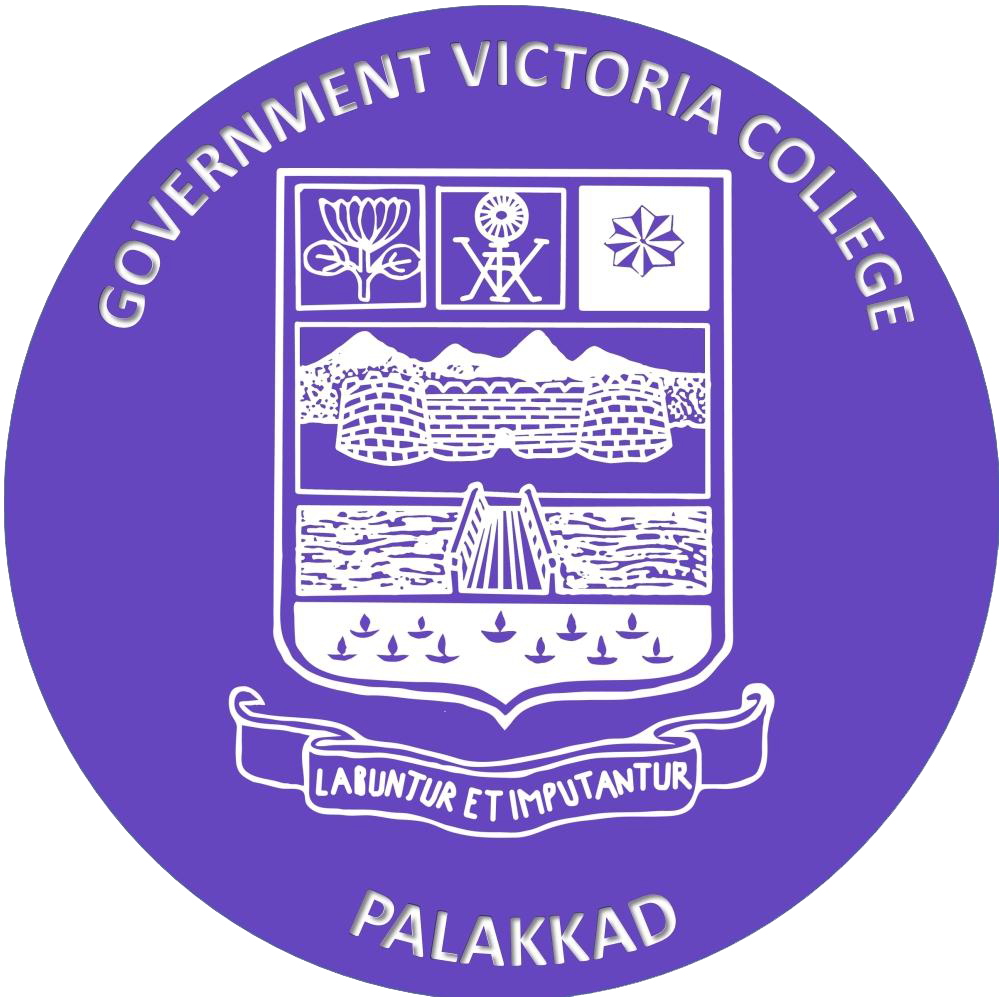Notification for Recruitment of Project Fellow
Radio frequency (RF) energy harvesting
using multi-band metamaterial absorbers
Major Research Project Funded by DST-SERB
Applications are invited from qualified candidates to work as Project Fellow for the DST-SERB funded Major Research project Radio frequency (RF) energy harvesting using multi-band metamaterial absorbers, which has been awarded to Dr. Gopikrishna M, Assistant Professor of Physics, Dept. of Physics, Govt. Victoria College, Palakkad. The fellowship is for three years, and the fellow will work full-time with the Principal Investigator.
1. Project Area
Electromagnetic Metamaterial, RF Energy Harvesting
2. Number of posts
One
3. Eligibility
Applicants should have an MSc degree in Physics or MSc Degree in Electronics with an aggregate of 70% or above. The applicant should have received all original certificates at the time of submitting their application form to this post. No extension will be allowed to submit qualifying degree certificates past the last date of online submission of the application.
4. Required skills
The proposed work involves extensive computer simulation of electromagnetic structures. The applicant should possess adequate aptitude for the same. It is desirable to have prior experience in Electromagnetic solvers such as CST Microwave Studio, Ansoft HFSS, Cadence Microwave Office, Agilent Advanced Design System (ADS) etc. Applicants must also possess good programming skills in Matlab, Python or C++.
5. Fellowship
The Project Fellow will be awarded a three-year fellowship beginning with the start of the project.
6. The start date of the project
The Project Fellow will have to join the institute for the research work with effect from July 1, 2022 (FN).
7. Deadline for application
June 23, 2022
8. Proposed date of interview
June 27, 2022
9. Venue of interview
Principal’s office, Govt. Victoria College, Palakkad
Department of Physics, at 10.00 AM
Department of Physics, at 10.00 AM.
Applicants are requested to bring the original PG mark list and PG degree certificate.
10. How to apply
Candidates satisfying the required skills may fill the below attached form (with photograph), combine it with the certificates pertaining to educational qualifications starting from class X in a single PDF and mail to :
gopikrishna@gvc.ac.in
Rank list
Synopsis of the work
Owing to its capacity to improve the mobility and reliability of low-power wireless devices, energy harvesting (and its applications in wireless power transfer) has recently gained significant attention. Electromagnetic (EM) energy harvesting in the radio frequency (RF) and microwave regimes has a number of enticing characteristics, including low cost, long-range power transmission capabilities, and small size. A rectifying antenna (rectanna), can be used in RF and microwave harvesting system to catch radiated EM waves from the environment and convert the obtained power to DC [1, 2]. Recently, metasurfaces (or metamaterials), which are arrays of electrically small resonators such as split-ring resonators (SRR) [3] and complementary split-ring resonators (CSRR) [4, 5], have proven to be potential alternatives to conventional antennas with the main advantage of increased efficiency. Metamaterial resonance allows electromagnetic energy to be absorbed at specific frequencies in the electromagnetic spectrum. In the gap of the SRR, electromagnetic radiation is absorbed in a direction that is coherent with the electric field direction. This energy is harvested by a lumped element placed on a gap. This mechanism, which can be a varicap or a resistor, provides the foundation for energy harvesting applications. Tunable harvesting applications can be achieved by placing a lumped element across the gap, such as a varicap.
Due to their compact geometry and the absence of destructive coupling between mutual elements in the array, metamaterials outperform traditional antenna array systems employed in harvesting. Metamaterial arrays, compared to the traditional antennas, give wider bandwidths due to constructive interaction between different parts, when used for harvesting applications. Optimal RF energy harvesting occurs when the metamaterial is constructed to have a high Q–factor resonance at the same frequency as the external radiation source. For ambient RF energy harvesting, these frequencies will usually be found in the ISM band (particularly those from 800 MHz to 6 GHz) from sources such as cell phone signals, GPS, and Wi–Fi. Power density levels that one might expect to find in urban environments can be found in [6], [7] and [8]. Greatest power densities measured is 6.4 µW=cm2, but average values typically range from 1-50 nW=cm2 depending on the frequency, time of day, and proximity to RF sources.
Low-power energy harvesting in the RF regime is a field of great interest for several reasons. It is handy in situations where the use of wires and/or batteries are impractical as in the cases of expansive sensor networks, structural health monitoring etc. The recent proliferation of RF signals due to cell phones, Wi-Fi networks, and GPS has produced readily available ambient power sources (although of low power density) for scavenging energy.
With the present work, it is intended to investigate the possibility of designing novel, high Q, magnetic meta–material resonators for efficient scavenging of RF signals. Magnetic meta-materials have a high coupling to an incident magnetic field and may be loaded with a wide range of circuit components. Depending on the specific use for the power harvesting meta-material, a variety of rectifying circuits can be employed. An array of the resonators can be designed to maximize the power output.
To improve the performance of meta-surface EM energy harvesters, this project will perform the following research:
(1) Engineer electrically small resonator for electromagnetic energy harvesting in the microwave regime
(2) Propose techniques to improve the harvesting bandwidth
(3) Propose techniques to improve the harvesting efficiency close to unity
(4) Propose multi-polarization structures to harvest RF energy, regardless of the wave polarisation
(5) Propose a channelling concept for collecting and transferring energy to a resistive load via multiple unit cells.
(6) Propose multi-band design that enable harvesting from radiation sources with different frequencies
(7) Realize a meta-surface with integrated rectifier circuits and study the power efficiency
Bibliography
[1] C.-H. Chin, Q. Xue, and C. H. Chan, “Design of a 5.8-ghz rectenna incorporating a new patch antenna,” IEEE Antennas and Wireless Propagation Letters, vol. 4, pp. 175–178, 2005.
[2] Y.-J. Ren and K. Chang, “5.8-ghz circularly polarized dual-diode rectenna and rectenna array for microwave power transmission,” IEEE Transactions on Microwave Theory and Techniques, vol. 54, no. 4, pp. 1495–1502, 2006.
[3] O. M. Ramahi, T. S. Almoneef, M. AlShareef, and M. S. Boybay, “Metamaterial particles for electromagnetic energy harvesting,” Applied Physics Letters, vol. 101, no. 17, p. 173903, 2012.
[4] B. Alavikia, T. S. Almoneef, and O. M. Ramahi, “Electromagnetic energy harvesting using complementary split-ring resonators,” Applied Physics Letters, vol. 104, no. 16, p. 163903, 2014.
[5] B. Alavikia, T. S. Almoneef, and O. M. Ramahi, “Complementary split ring resonator arrays for electromagnetic energy harvesting,” Applied Physics Letters, vol. 107, no. 3, p. 033902, 2015.
[6] M. Piñuela, P. D. Mitcheson, and S. Lucyszyn, “Ambient rf energy harvesting in urban and semi-urban environments,” IEEE Transactions on Microwave Theory and Techniques, vol. 61, no. 7, pp. 2715–2726, 2013.
[7] H. J. Visser, A. C. Reniers, and J. A. Theeuwes, “Ambient rf energy scavenging: Gsm and wlan power density measurements,” in Microwave Conference, 2008. EuMC 2008. 38th European, pp. 721–724, IEEE, 2008.
[8] D. Bouchouicha, F. Dupont, M. Latrach, and L. Ventura, “Ambient rf energy harvesting,” in International Conference on Renewable Energies and Power Quality, pp. 1–4, 2010.
Get in touch with us
Govt. Victoria College
Palakkad
Kerala, India
PIN 678001
Phone
0491 257 6773
Get in touch with us
victoriapkd@gmail.com
Websites
www.victoriacollege.ac.in
www.gvc.ac.in
2021 gvc.ac.in | All rights reserved.
Developed and maintained by the Govt. Victoria College, Palakkad
Admin contact: websitegvc@gmail.com






